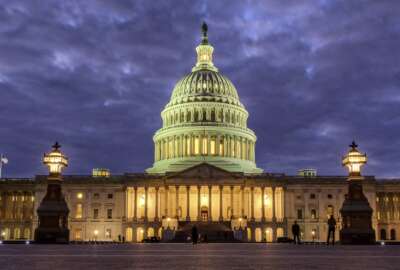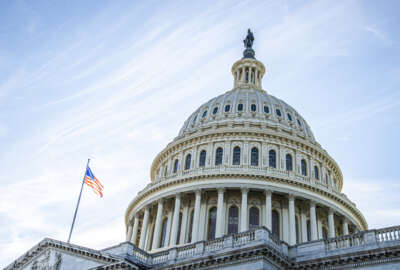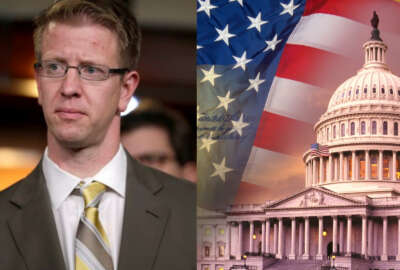House passes bills tackling DHS communications during disasters
Legislation passed by the House creates a social media working group for the Department of Homeland Security, and adds in requirements and accountability processes...
By Dena Levitz
Federal News Radio
When disaster strikes, the Department of Homeland Security wants communication to be smoother, faster and more efficient at every level.
This week, Congress took steps toward that goal with the passage of a pair of House bills geared toward improved information sharing.
The first bill, H.R. 4289, tackles communications within DHS divisions, and between DHS and other agencies or relevant stakeholders. It passed the House by a vote of 393-0.
The other, more outward-facing bill, H.R. 4263, creates a committee tasked with examining how to better use social media tools to interact with the public during disasters. It passed by a vote of 375-19.
Rep. Donald Payne (D-N.J.) sponsored the Department of Homeland Security Interoperable Communications Act. The legislation is in response to recommendations from a 2012 DHS inspector general report that found the agency lacks an effective governance structure to ensure interoperable communications across its divisions.
The bill defines interoperable communications as “utilizing information technology systems and radio communications systems to exchange voice, data, and video in real time, as necessary, for acts of terrorism, daily operations, planned events, and emergencies.”
Payne told Federal News Radio, “I was shocked to learn that nationwide we’ve spent $13 billion to achieve interoperable communications and, at this point, we have not been successful. So it opened an issue for me, understanding that within DHS people need to be able to communicate. Having spent this type of money to that end and it’s not being achieved was something very disturbing to me.”
The $13 billion sum includes funds that went to state and local governments to bolster their communications with each other as well as to DHS overall.
Strides by state and local governments; need for DHS to take the lead
In some instances, Payne said state and local governments have made “great strides” even above their federal counterparts. During the Super Bowl, for example, state and local agencies interacted easily. In the wake of the Boston Marathon bombings, interoperable communications were so effective that, once the bombs were detonated, law enforcement were able to clear the area within 22 minutes, he said.
“I found that astounding based on chaos that those bombs wreaked,” Payne said. “The problem is really DHS and them setting the example.”
What the bill provides is a framework and structure to hold DHS accountable for improving interoperability. For one, it designates the under secretary for management to be the permanent chairperson overseeing this effort. A representative from a state or local government agency will co-chair the group. Together, they will appoint a “cross section of subject matter experts from federal, state, local, tribal and non-governmental organization practitioners” to take part as well.
Within 120 days of the bill being enacted the under secretary must provide an update that looks at interoperability gaps and efforts since November 2012 to foster better cross-department interactions, including how much funding went toward these efforts, as well as communications obstacles. This research will form the basis for an improvement strategy. Along the way, the group will have to submit milestone reports of its progress.
Creating a diversified, enhanced social media working group
H.R. 4263, also passed, deals with social media usage during disasters. It was sponsored by Rep. Susan Brooks (R-Ind.). The legislation essentially establishes a social media working group for DHS. There has been a Virtual Social Media Working Group in existence for about two years, and the proposal builds upon that group by diversifying the membership. Going forward, the working group would include representatives of the private sector, non-profit disaster relief organizations, along with government employees. The new working group will be expected to meet regularly and draft a yearly report explaining strides made.
“Social media has dramatically changed the way we communicate with each other and using it the right way can save lives when disaster strikes. This bill … gives private sector innovators new opportunities to share their expertise and ideas,” Brooks said in a release after the bill’s passage. “This is the product of more than a year of witness testimony, background research and committee outreach indicating a need for greater collaboration between the hi-tech industry, non-profit organizations and federal, state and local emergency response providers.”
The group is charged with providing guidance and best practices to the emergency preparedness and response community on the use of social media technologies before, during, and after a terrorist attack or other emergency.
Brooks described the work as “demonstrating new strategies for using cutting-edge tools to keep people safe.”
Social platforms are only growing in significance in emergencies and beyond
The first-term congresswoman, in January, wrote an op-ed that appeared in The Social Media Monthly emphasizing how critical social media has become, especially in emergencies.
“Long gone are the days where radios, televisions, and newspapers were the only sources of information. Social media is one of the primary ways we share information. This is particularly true during times of emergency, where people turn to social media to obtain public safety information, connect with friends and family, and even request assistance from emergency response organizations,” she wrote. “For example, the first official announcement that Boston Marathon bomber Dzhokhar Tsarnaev had been captured was not through a traditional press conference, but through the Boston Police Department’s Twitter account.”
In the op-ed, Brooks additionally points to the substantial role of Twitter, Facebook and Instagram during Hurricane Sandy, as residents scoured the platforms for “information about the storm’s projected track, the location of streets and towns that were flooded, how to place requests for federal assistance, and the location of open shelters.”
A series of hearings held last year, focused on social media and emergency response. The hearings were used to gauge deficiencies and ultimately paved the way for the House bill. Technology companies like Google participated as a means of presenting a non-governmental perspective.
Payne said the social media working group — and embracing social media communications best practices — is a crucial step as social media plays a bigger and bigger role in people’s lives.
“We know [with] young people now, that’s how they communicate,” he said. “That’s the way they get their information. That’s the way they get their news. So it’s really important that we have that type of interaction with the American people.”
There is no word yet on when either bill will be considered by the Senate.
RELATED STORIES:
IT is DHS’s next challenge for better intel sharing
Agencies turn to social media to engage public in an emergency
How to make social media a ‘great equalizer’ for your agency
Agencies ‘open the door’ to innovative uses of social media
Copyright © 2024 Federal News Network. All rights reserved. This website is not intended for users located within the European Economic Area.





